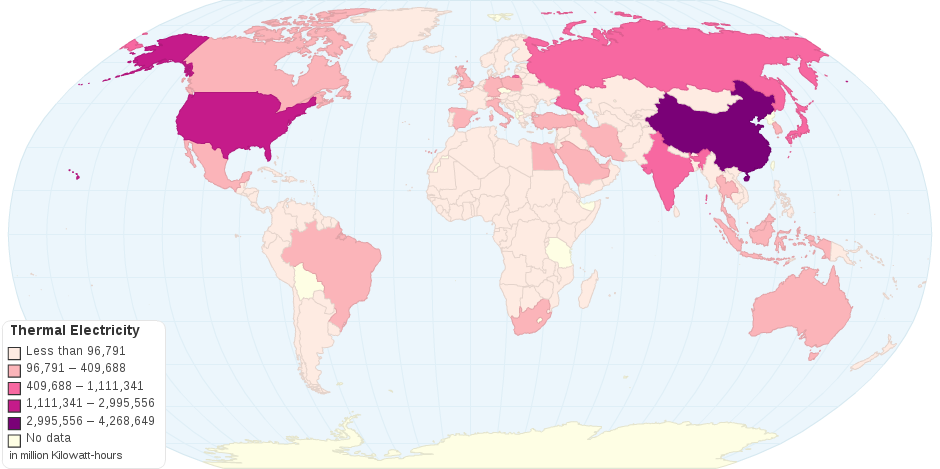This chart shows Thermal Electricity by Country.
A thermal power station is a power plant in which heat energy is converted to electric power. In most of the places in the world the turbine is steam-driven. Water is heated, turns into steam and spins a steam turbine which drives an electrical generator. After it passes through the turbine, the steam is condensed in a condenser and recycled to where it was heated; this is known as a Rankine cycle.
The greatest variation in the design of thermal power stations is due to the different heat sources, fossil fuel dominates here, although nuclear heat energy and solar heat energy are also used.Some prefer to use the term energy center because such facilities convert forms of heat energy into electrical energy.Certain thermal power plants also are designed to produce heat energy for industrial purposes of district heating, or desalination of water, in addition to generating electrical power.
Almost all coal, nuclear, geothermal, solar thermal electric, and waste incineration plants, as well as many natural gas power plants are thermal. Natural gas is frequently combusted in gas turbines as well as boilers. The waste heat from a gas turbine, in the form of hot exhaust gas, can be used to raise steam, by passing this gas through a Heat Recovery Steam Generator (HRSG) the steam is then used to drive a steam turbine in a combined cycle plant that improves overall efficiency.
Commercial electric utility power stations are usually constructed on a large scale and designed for continuous operation. Virtually all Electric power plants use three-phase electrical generators to produce alternating current (AC) electric power at a frequency of 50 Hz or 60 Hz. Large companies or institutions may have their own power plants to supply heating or electricity to their facilities, especially if steam is created anyway for other purposes.
The energy of a thermal power plant not utilized in power production must leave the plant in the form of heat to the environment. This waste heat can go through a condenser and b e disposed of with cooling water or in cooling towers. If the waste heat is instead utilized for district heating, it is called co-generation.
9 years ago

